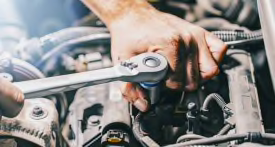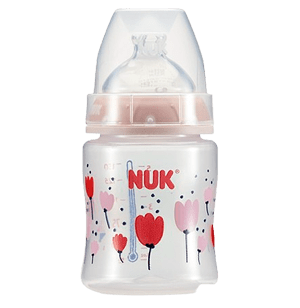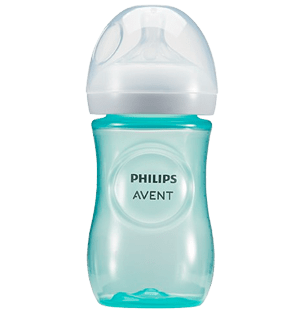Baby Bottles With No Detected BPA, Lead, or Phthalates
We didn’t find the dangerous chemicals in any of the nine bottles we tested. Still, some concerns remain. Here’s how to keep your baby safe.
When you shop through retailer links on our site, we may earn affiliate commissions. 100% of the fees we collect are used to support our nonprofit mission. Learn more.

New parents understandably want to shield their babies from potentially harmful chemicals. After all, a baby’s tiny body is particularly vulnerable to risk from chemicals such as bisphenol A (BPA), lead, and phthalates. That’s why Consumer Reports recently tested nine popular baby bottles for those compounds.
The good news: We didn’t detect any of those chemicals in any of the bottles we tested.
Still, some precautions are warranted, says Ashita Kapoor, associate director of product safety at CR, who led our baby bottle tests. She points out, for example, that other bottles on the market could still contain those chemicals. And even the bottles we tested might be made with other harmful compounds that we didn’t look for, or could release them in certain situations, such as when they’re heated to high temperatures.
But there are things you can do to reduce the risk of your baby being exposed to BPA or other chemicals from their bottles, including using bottles made from glass or silicone. Glass and silicone bottles are less likely to contain potentially harmful chemicals than those made from plastic.
Testing Baby Bottles
CR’s baby bottle tests looked at some products made from plastic and some made from silicone or glass.

Natural Flow Anti-Colic Options+
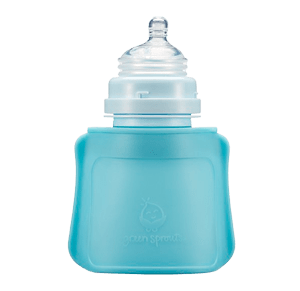
Silicone & Sprout Ware Baby Pocket
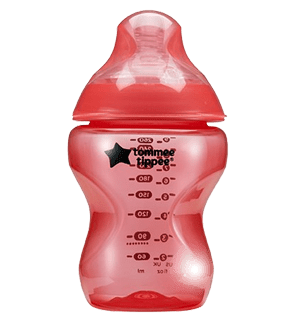
Closer to Nature Baby Bottle
Plastic
How to Reduce Risks
While CR’s findings on baby bottles are reassuring, there are still potential concerns. Here’s what they are, and how to reduce those risks.
Plastic Baby Bottles Could Contain Other Bisphenols or Phthalates
While we didn’t find BPA in any of the bottles we tested, and that chemical is no longer supposed to be used in any baby bottle, some manufacturers now use related chemicals—such as bisphenol S (BPS) and bisphenol F (BPF)—as replacements. Research confirms that these substitution chemicals are common. As blood levels of BPA in people across the U.S. have fallen, levels of those alternatives have risen, Payne-Sturges says. And because these chemicals are structurally similar to BPA, they’re likely to cause similar health effects, Zoeller says.
Similarly, while we didn’t detect any of the eight phthalates we tested for—all of which have federal regulations limiting their use—there are many other related compounds out there, Payne-Sturges says. And researchers think that health problems could be caused by exposure to cumulative levels of many different types of phthalates, not just a few.
Safety tip: Consider glass or silicone baby bottles. Glass bottles in particular are much less likely to contain any kind of bisphenol or phthalate, Kapoor says, but just be careful not to break them. Silicone, especially food-grade silicone, is also less likely to contain those chemicals.
Other Baby Bottles Could Still Contain BPA
For CR’s current tests, we selected nine bottles from some of the top-selling brands. Some research suggests that even if BPA is no longer used in baby bottles sold in the U.S., some bottles made overseas and sometimes available to U.S. consumers could still have BPA.
Safety tip: Choose one of the bottles CR tested, or buy baby bottles from reputable retailers in the U.S. Be wary of third-party sellers.
High Heat Could Release BPA
While our tests didn’t detect BPA in any of the bottles, it’s possible that the compound could be released when plastic bottles are subjected to high temperatures.
Safety tip: Try not to expose plastic baby bottles to high temperatures, such as in a microwave or even in a dishwasher. Instead, it’s generally best to clean plastic baby bottles by hand, using a bottle brush, and letting them air-dry. And don’t overheat milk or formula that you put into plastic bottles.
Heavy Metal Contamination Is Unpredictable
While lead contamination isn’t common in baby bottles, it has occasionally been an issue. In 2022, some bottles made by Nuk—one of the brands in CR’s tests—were recalled after markings on the bottles were found to contain high levels of lead. (We didn’t detect lead in the Nuk bottle we tested.) Without testing specific products, there’s no way to know for sure whether a product is contaminated with lead, Kapoor says.
Safety tip: Choose one of the products CR tested.
Of course, even with those precautions it’s nearly impossible to protect your baby from all exposure to harmful chemicals, says Patricia Hunt, PhD, a professor at Washington State University’s School of Molecular Biosciences in Pullman. “Contamination now is everywhere,” she says.
Ultimately, Payne-Sturges, at the University of Maryland, says we should look to public health agencies to more strictly regulate these chemicals. “We cannot shop our way out of these exposures as individuals,” she says.
